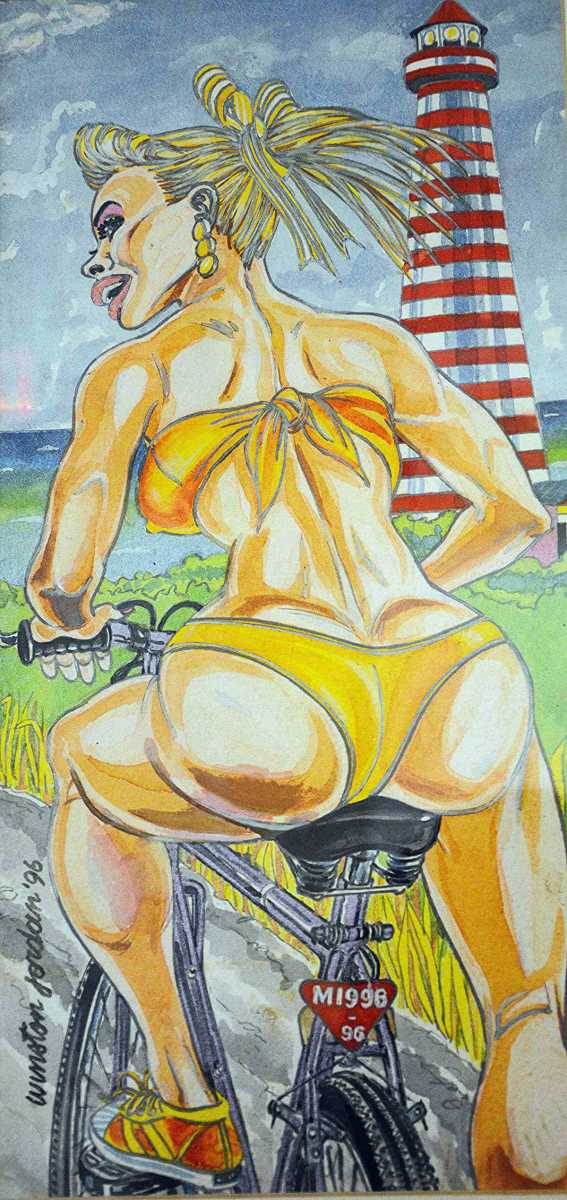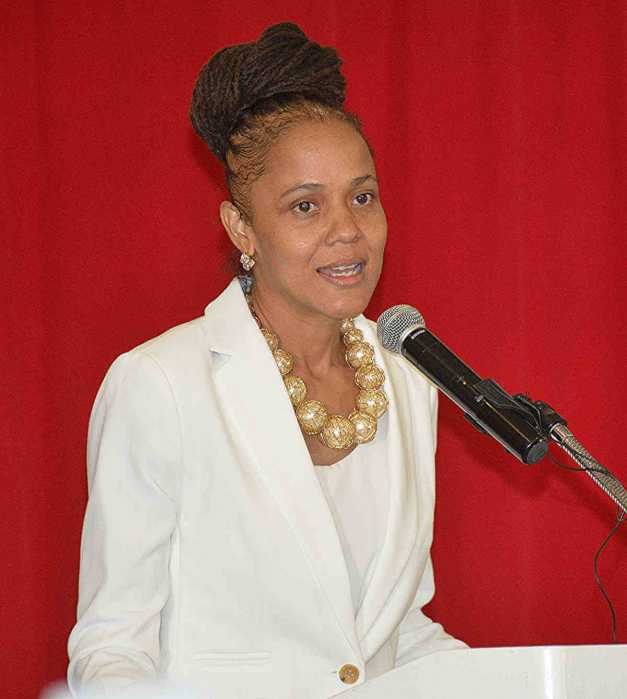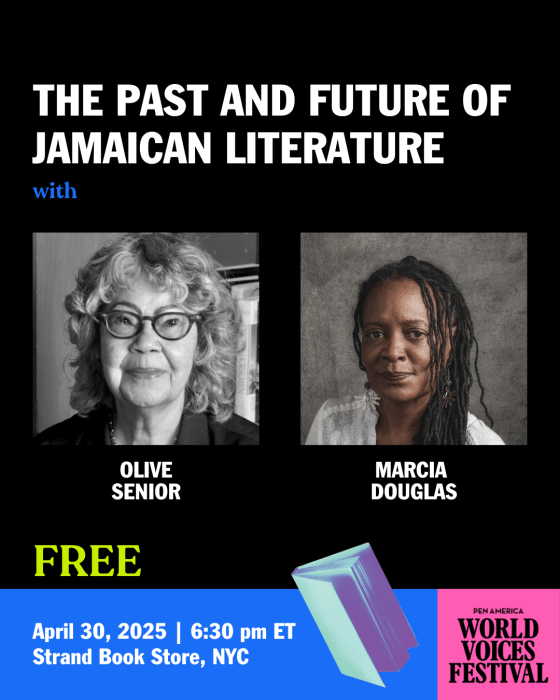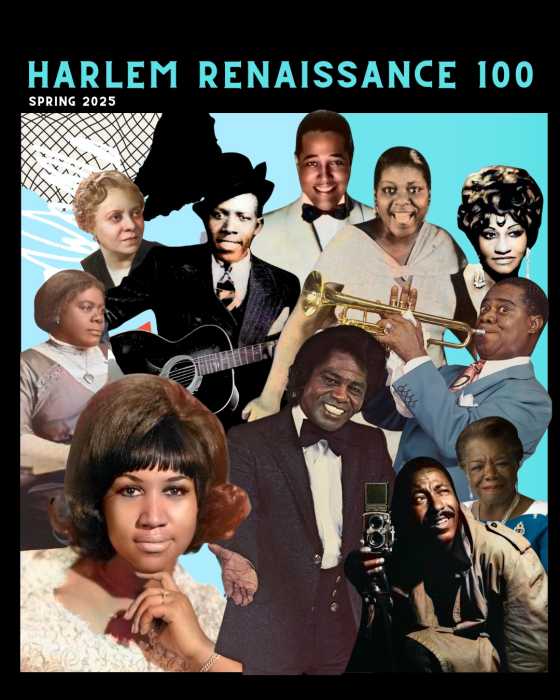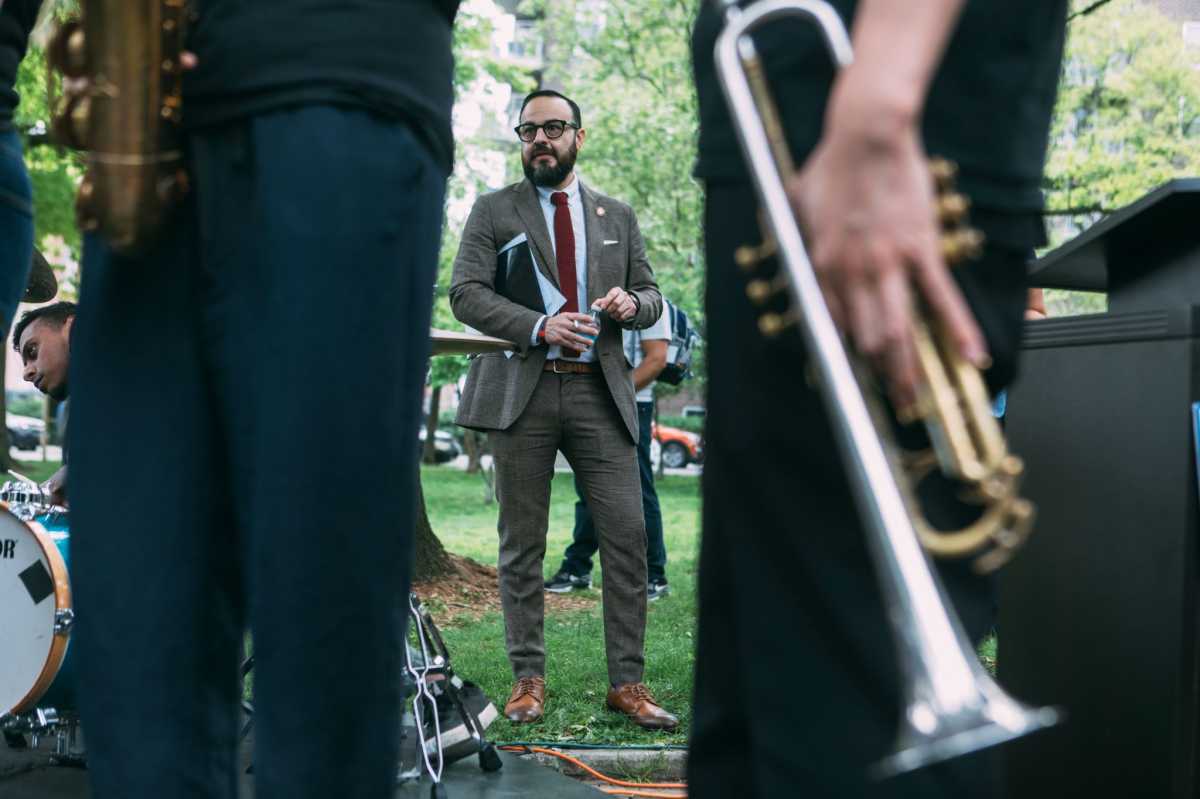A recent exhibition of Bajan artist Winston Jordan brought to life images of common existence across the Caribbean from the icon of a cricketing legend to colourful masqueraders, the revealing scene of bush bath ritual, and the quintessential derriere of the Caribbean woman.
Moving from vibrant colours in crayon and acrylic to masterful black and white effect, Jordan’s pieces brought warmth to a chilly gallery room of the Exchange Centre of the Central Bank of Barbados.
The array of ample female haunches was sure to bring heat under the collar of some viewers in that cooled room, as the images were offered up in views bound to tantalize the imagination while at the same time reminding one of the expansive freedoms of Caribbean lifestyle.
Sensuality is further pronounced in the eerie candle-lit setting of a gentleman, brandishing a less than gentlemanly countenance, as he administers a bush bath to a pleasured female.
There was a bubbling Mother Sally being looked-up at by an intrigued boy.
Then there is the unmistakable portrait the Master Blaster, Vivian Richards — a star among those who brought pride to the region as a collective – followed by booklets of cartoons of social commentary that once told stories in the Barbados Nation newspaper.
Such an exhibit covering the intertwined disciplines of artistic presentation on paper and canvas can belong to a few people, and one of them has to be artist, newspaper cartoonist, song writer, and costume designer, the late Winston Jordan.
The selected works of Jordan, who passed away in 2007, were on display since the beginning of this month and ended on April 4.
It was part of the Annual Caribbean Fine Art (CAFA) fair, but while a gallery was set up for other Barbadian and regional artistes for five days that ended on March 10, Jordan’s work was given a month showcase, reflective of the lasting impact he made on Barbadian cultural life.
CAFA director, Anderson Pilgrim said the exhibition is not just about celebrating Jordan’s legacy “but it looks at what he has contributed overall to the various areas that he operated in, commercial art, visual art, festival art.”
“He was one of the people who drove CropOver,” the organiser said, then hurrying on to make clear that the culturally imbued designs and promotions of Jordan in CropOver are, “well, not exactly what it has become today.”
“He didn’t particularly like the direction CropOver was going, the skin and feathers thing.
“He wanted us to portray our culture and to delve into history.”
Pilgrim reflected that his attention was first drawn to Jordan as a cartoonist at the Nation newspaper in the 70s.
“It was a revelation to see Barbadian culture reflected in cartoons where all the cartoons that I knew of were done overseas. Winston captured the Barbadian essence.”
Speaking of “a wonderful selection of art work that he left us,” Pilgrim pitched, “I believe that the national collection needs to have some of his works. He is a national icon and we need to remember him.”






